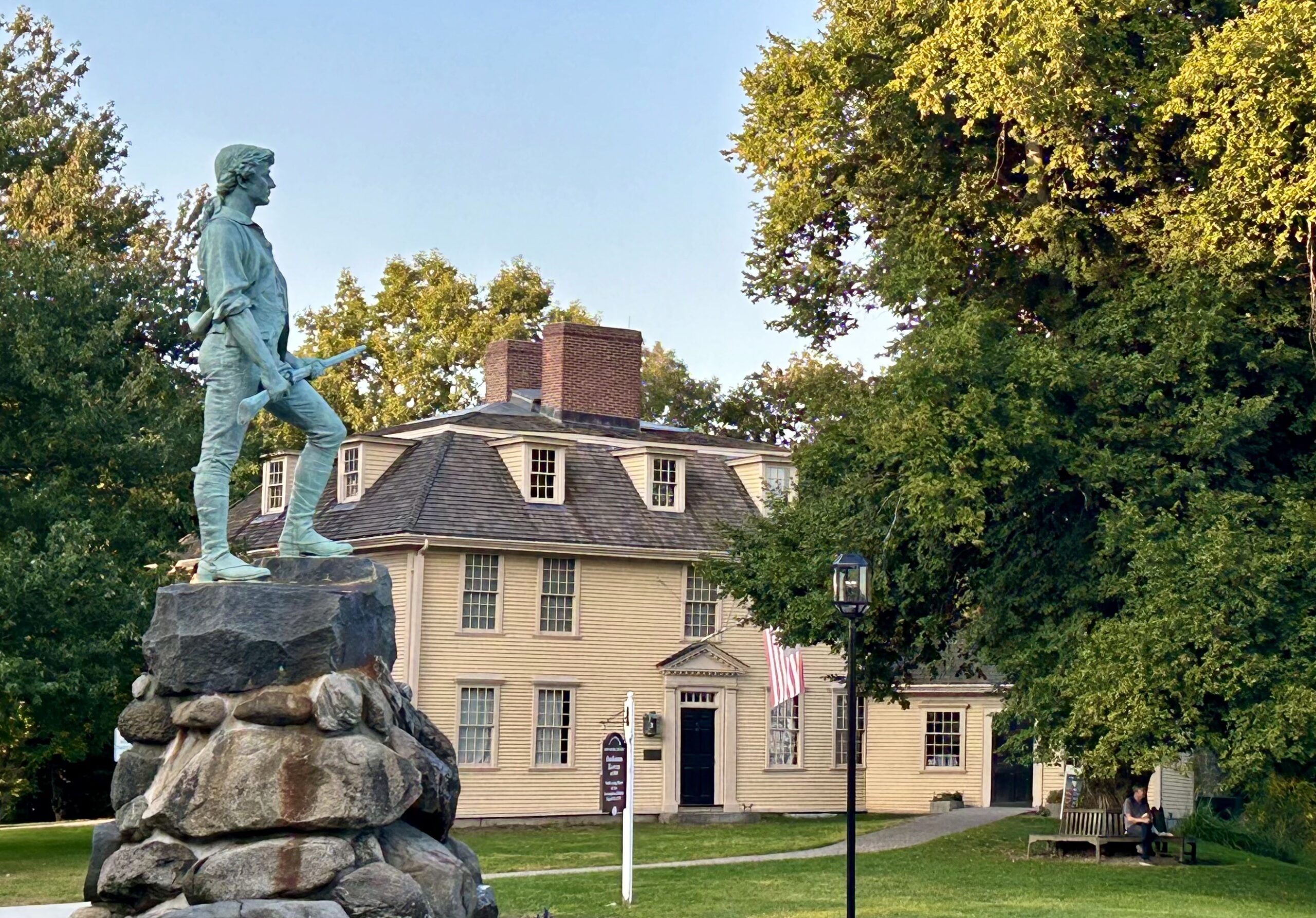Whether you call it a tavern, a pub or a bar and grill, they all offer a cold beer and a quick bite to eat. But taverns played an important role in Massachusetts and in our country’s founding. While we now think of Taverns as a place to get together for an evening out, they had many different purposes in the 18th century.
Back then, taverns were social and political centers of the community, a place for residents to engage in debate, discuss the news, and converse with travelers who’d come through the town and seek lodging at the tavern.
As we reflect on our state’s past 250 years and look towards the future, we’ve put together a list of some of the most historic 18th century taverns, some of which are still operating today.
Buckman Tavern – Lexington
Then: Did you know the Lexington militia gathered in a tavern right before taking on the British army in the Battles of Lexington and Concord? Buckman Tavern, built in 1710 by Benjamin Muzzey, was the first public house in Lexington. On April 18, 1775, several dozen armed militiamen gathered on the Lexington Battle Green to await the arrival of the British, who never showed.
To regroup and keep the militia safe, Captain John Parker ordered them to seek shelter in nearby Buckman Tavern until they were needed to attack. The Lexington militia assembled on the Common around 5:00 a.m. after receiving word just before sunrise that the British troops had arrived, and the Battles of Lexington and Concord officially took place on April 19, 1175.
Now: In 1913, the building was acquired by the Town of Lexington, who restored the interior to its colonial-era appearance after it was converted to a post office in 1813. Buckman Tavern was declared a National Historic Landmark in 1961 and today is operated as a must-see historical museum by the Lexington Historical Society.
Warren Tavern – Charlestown
Then: Founded in 1780, Warren Tavern is considered to be one of the oldest taverns in Massachusetts. Its name hails from Dr. Joseph Warren, a Revolutionary leader who is known for sending Paul Revere and William Dawes on their messenger rides to Lexington just before the Battles of Lexington and Concord. He was ultimately killed during the Battle Of Bunker Hill. In the Tavern’s earliest years, it was frequented by well-known war heroes such as George Washington, Paul Revere and Benjamin Franklin.
Did you know George Washington’s funeral speech was given at Warren Tavern?
Now: Warren Tavern still stands proud today in Charlestown. It is a popular staple for local residents to dine and drink like our founding fathers and explore its rich history. Nearby, you can find the Bunker Hill Monument and see a marble statue commemorating Dr. Joseph Warren, as well as visit the Bunker Hill Museum to learn about Charlestown’s role in the Revolution.
Parker Tavern – Reading
Then: Built in 1694 by blacksmith Abraham Bryant Jr.,the historic Parker Tavern is a great example of taverns that could lodge guests, also known as an inn. It belonged to various owners over time and got its name from Ephraim Parker, the great-grandson of Thomas Parker, one of the founders of Reading. Licensed to operate as a tavern from 1770 and 1785, Ephraim managed operations and simultaneously served in the Battles of Lexington and Concord before passing away in 1804. During his time running the tavern, Ephraim hosted war prisoners from a captured Regiment, including Colonel Archibald Campbell until 1778.
Now: Parker Tavern was acquired by Reading in 1916 and sold to the Reading Antiquarian Society in 1923. Since then, it has operated as a historic house museum known as Parker Tavern. Additionally, Parker Tavern was listed on the National Register of Historic Places in 1975.
Colonial Inn – Concord
Then: Originally built in 1716, what is now known as the Colonial Inn began as three separate structures that were later combined in 1897 by John Maynard Keyes. These sections, known as the Thoreau House, the Main Building, and the White House, each have a rich history.
During the Revolutionary War in 1775, the Main Building stored arms and provisions for the Concord Minutemen. These supplies became the target of the British on April 19, 1775, leading to the first battle of the American Revolution at the nearby North Bridge. The western section, known as the White House, was originally home to Deacon John White and his wife before becoming part of the combined Inn under Keyes, who reopened it as “The Colonial” in 1889. One notable visitor in 1775 was John Howe, who stayed at the Inn under orders from General Thomas Gage to examine the “roads, bridge, and fording places” to ascertain the best route for an army to take between Boston and Worcester.”
Now: Known as “Concord’s Colonial Inn,” it remains a historic landmark in Concord. The property completed renovations in 2014 to update its public spaces and guestrooms, including those in the Prescott Wing and Main Inn. The Inn remains a cherished piece of history, located near the site of the iconic battle and the annual Patriots’ Day celebrations.
Fun fact: Many believe the Concord Inn is haunted! Paranormal activity has been investigated in other areas of the hotel as well. In early 2005, two organizations investigated at Concord’s Colonial Inn: Ghost Images Paranormal Investigations and Spirit Encounters Research Team. More recently, Syfy’s hit show Ghost Hunters did an hour-long episode on the Inn to explore paranormal experiences.
Hartwell Tavern – Lincoln
Then: Built in 1732-1733, Hartwell Tavern was a wedding gift from Samuel Hartwell to his son, Ephraim, and his new wife, Elizabeth. In 1756, Ephraim applied for a license to run the home as an inn, which operated as such until the 1780s.
The tavern became a key landmark during the events surrounding the Battle of Lexington and Concord. On the night of April 18, 1775, during the famous “Midnight Ride,” Samuel Prescott, who had been riding with Paul Revere and William Dawes, managed to reach Hartwell Tavern, where he informed Ephraim Hartwell of the British advance. Ephraim sent a messenger to spread the word, and the message ultimately reached Captain William Smith, allowing the Lincoln Minutemen to arrive at Old North Bridge before the British.
Now: In the 1980s, the National Park Service restored Hartwell Tavern to its 1775 appearance, with approximately 65% of the original structure still intact. While the tavern no longer operates as an inn, its history is preserved as part of Minute Man National Historical Park. The tavern’s original sign is displayed at Buckman Tavern in Lexington, providing visitors with a glimpse into its Revolutionary past.
These historical taverns allow us to commemorate and reflect on our state’s vast Revolutionary history, while still being able to enjoy all they have to offer in the present and for years to come. Be sure to check out these locations and the many others as we celebrate 250 years of the American Revolution!





